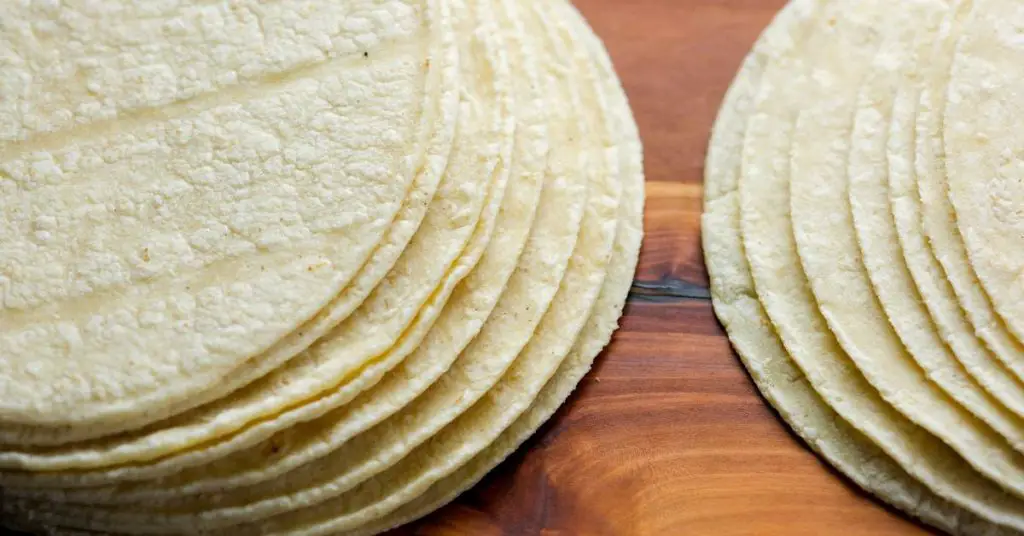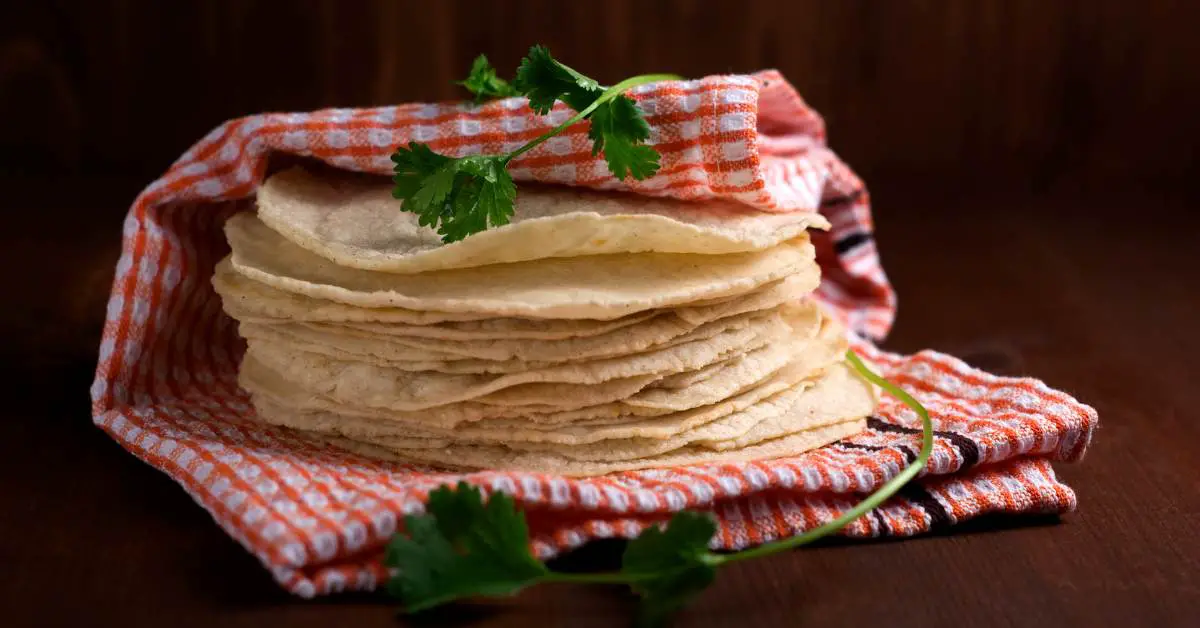Are corn tortillas low histamine? Most people can enjoy corn tortillas without problems, but if you’re dealing with histamine intolerance or sensitivity, finding suitable foods that won’t trigger unwanted symptoms can be challenging.
In your quest for a low histamine diet, you may wonder whether corn tortillas, a staple in many culinary traditions, are a safe choice.
Let’s look at the scientific evidence surrounding the histamine content of corn tortillas to shed light on their potential to fit into a low histamine eating plan.
Histamine Intolerance and Low-Histamine Foods
Histamine is a compound naturally produced by our bodies and is also present in various foods. Despite its bad reputation, it has a useful purpose.
Histamine supports immune system function by dilating blood vessels, so immune cells can reach the site of injury more easily. Plus, it plays a role in the secretion of stomach acid and in your sleep-wake cycle. (1)
However, as you know, with histamine intolerance, you have problems breaking down and eliminating histamine. This is usually due to low levels of key enzymes, particularly diamine oxidase, that normally break down histamine(2)
To control histamine intolerance symptoms, you need to reduce the histamine content of your diet, meaning you’ll need to consume fewer foods high in histamine.(3) Now, let’s look at corn tortillas.
The Histamine Content of Corn Tortillas
When it comes to corn tortillas, their histamine content largely depends on how they’re processed and stored.
Manufacturers make corn tortillas from masa harina, which is a type of corn flour made from dried corn kernels treated with an alkali solution, such as lime water. This process is called nixtamalization, and it makes the corn more nutritious and easier to digest.
When you mix masa harina with water, it forms a dough you can press into tortillas and cook on a griddle or comal. Corn tortillas are not typically fermented. That’s important since fermentation produces histamine, which is why you want to avoid fermented foods.
Freshly made corn tortillas have minimal histamine levels due to the simplicity of their ingredients and the fact that they aren’t fermented.
However, there is the potential for cross-contamination during production, something to consider if you have severe histamine intolerance.
Compared to other fermented or aged foods notorious for high histamine levels, such as aged cheese, cured meats, or fermented vegetables, corn tortillas have a relatively low risk of triggering histamine reactions.
Their simple preparation and lack of fermentation make them a potentially favorable option for individuals seeking low histamine foods.

Corn Tortillas May Contain Additives
Commercial corn tortillas may contain additives. Some additives that may be in a package of corn tortillas include calcium propionate, sodium metabisulfite, and fumaric acid.
Calcium propionate is a preservative that prevents mold growth. Sodium metabisulfite is a bleaching agent and preservative. Fumaric acid is an acidulant to improve the texture and flavor of tortillas. (4)
If you buy commercial corn tortillas, read the ingredient label, and look for one with as few preservatives and additives as possible.
So, the next time you’re shopping for tortillas, look for ones with the most natural ingredients. Your taste buds and your body will thank you in the long run!
Also, avoid corn tortillas at restaurants, as you don’t know how old they are and what additives they may contain. Plus, Mexican restaurants often fill corn tortillas with high-histamine foods, such as aged cheeses, fermented salsas, and pickled vegetables.
Find how long it takes for histamine levels to come down after eating a high-histamine food.
Store Corn Tortillas Properly
To ensure histamine levels remain low, always store corn tortillas in airtight packaging to prevent exposure to moisture, as damp conditions can promote histamine formation.
If possible, purchase tortillas vacuum-sealed or tightly wrapped in plastic.
Once you’ve opened the package, reseal it tightly after each use, or transfer the tortillas to an airtight container or a resealable plastic bag for added protection. By taking these simple steps, you can ensure your corn tortillas stay fresh and low in histamines for longer.

Make Your Own Corn Tortillas
To make corn tortillas, you will need masa harina (corn flour), water, and salt.
- First, mix the masa harina and salt in a bowl.
- Then add water and knead the dough until it is smooth. Divide the dough into small balls and flatten them into tortillas using a tortilla press or rolling pin.
- Cook the tortillas on a hot griddle or skillet for about 30 seconds on each side until they are lightly browned.
The Role of Individual Sensitivity
While corn tortillas are generally considered low histamine, individual sensitivities may vary. Some people with histamine intolerance may find that even foods with relatively low histamine levels can trigger symptoms.
Listen to your body and keep a food journal to monitor your symptoms when you add a new food.
And it’s also advisable to consult with a healthcare professional or registered dietitian experienced in histamine intolerance to determine the most suitable dietary choices for your specific needs.
Since a low-histamine diet can be restrictive,(5) a dietitian can design a balanced diet for you that includes all the essential nutrients you need in sufficient quantities.
Incorporating Corn Tortillas into a Low Histamine Diet
Are corn tortillas low histamine? If you find that corn tortillas are well-tolerated and align with your personal dietary goals, they can be a versatile addition to a low histamine eating plan.
Get creative and enjoy them as a base for delicious, nutritious tacos, enchiladas, or as a gluten-free alternative to wheat-based tortillas.
Fill them with fresh vegetables, lean proteins, and flavorful herbs and spices for a satisfying and histamine-friendly meal. But make sure the foods you place in a corn tortilla are low histamine.
Corn Tortillas Are a Low-Histamine Food
While individual sensitivities may vary, corn tortillas generally have a low histamine potential. Their simple composition and lack of extensive fermentation make them a potentially safe option for individuals with histamine intolerance.
As always, it’s crucial to pay attention to storage conditions, potential cross-contamination, and listen to your body’s signals when incorporating any new food into your low histamine diet.
By making informed choices, you can continue to enjoy a diverse and satisfying diet, while effectively managing your histamine intolerance.
References:
- Carlo Pucillo. The Role of Histamine and Histamine Receptors in Mast Cell-Mediated Allergy and Inflammation: The Hunt for New Therapeutic Targets (2023). Available at: https://www.frontiersin.org/articles/10.3389/fimmu.2018.01873/full (Accessed: 10 May 2023).
- Valentina Cucca 1 2, Giuseppe A Ramirez 1 2, Patrizia Pignatti 3, Chiara Asperti 1 2, Marco Russo 1, Emanuel Della-Torre 1 2, Daniela Breda 4, Samuele E Burastero 2 4, Lorenzo Dagna 1 2, Mona-Rita Yacoub 1 2. Basal Serum Diamine Oxidase Levels as a Biomarker of Histamine Intolerance: A Retrospective Cohort Study – PubMed (2023). Available at: https://pubmed.ncbi.nlm.nih.gov/35406126/ (Accessed: 10 May 2023).
- Histamine Intolerance: The Current State of the Art (2023). Available at: https://www.ncbi.nlm.nih.gov/pmc/articles/PMC7463562/ (Accessed: 10 May 2023).
- Ordaz Ortíz JJ, Vázquez Carrillo MG. Vida de anaquel y evaluación sensorial en tortillas de maíz elaboradas con conservadores y mejoradores [Shelf-life and sensorial evaluation of corn tortillas, made with preservatives and texture conditioners]. Arch Latinoam Nutr. 1997 Dec;47(4):372-6. Spanish. PMID: 9673700.
- Sánchez-Pérez S, Comas-Basté O, Veciana-Nogués MT, Latorre-Moratalla ML, Vidal-Carou MC. Low-Histamine Diets: Is the Exclusion of Foods Justified by Their Histamine Content? Nutrients. 2021 Apr 21;13(5):1395. doi: 10.3390/nu13051395. PMID: 33919293; PMCID: PMC8143338.

